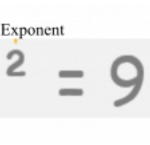Feb06
Learn How to Solve a Time Word Problem

In today’s post, we are going to work with time word problems. We’ll take a look at some examples and solve them together. Let’s begin! Time Word Problem 1: The Sailboat Race In a sailboat race, the winning boat completed two distances in the following times: 2 min 22 seconds and 3 min 45 seconds. How […]
Continue reading »








